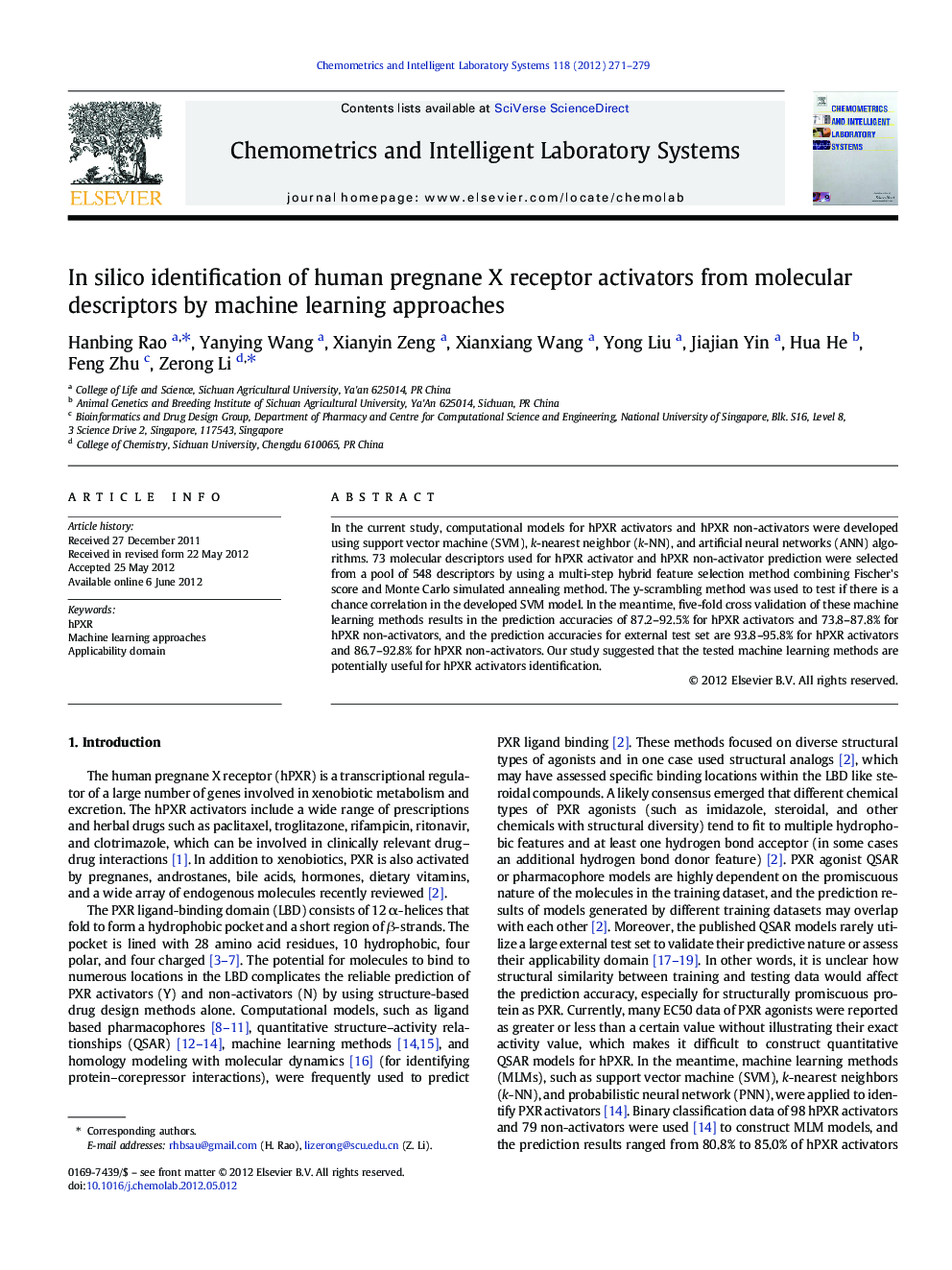| Article ID | Journal | Published Year | Pages | File Type |
|---|---|---|---|---|
| 7563719 | Chemometrics and Intelligent Laboratory Systems | 2012 | 9 Pages |
Abstract
In the current study, computational models for hPXR activators and hPXR non-activators were developed using support vector machine (SVM), k-nearest neighbor (k-NN), and artificial neural networks (ANN) algorithms. 73 molecular descriptors used for hPXR activator and hPXR non-activator prediction were selected from a pool of 548 descriptors by using a multi-step hybrid feature selection method combining Fischer's score and Monte Carlo simulated annealing method. The y-scrambling method was used to test if there is a chance correlation in the developed SVM model. In the meantime, five-fold cross validation of these machine learning methods results in the prediction accuracies of 87.2-92.5% for hPXR activators and 73.8-87.8% for hPXR non-activators, and the prediction accuracies for external test set are 93.8-95.8% for hPXR activators and 86.7-92.8% for hPXR non-activators. Our study suggested that the tested machine learning methods are potentially useful for hPXR activators identification.
Related Topics
Physical Sciences and Engineering
Chemistry
Analytical Chemistry
Authors
Hanbing Rao, Yanying Wang, Xianyin Zeng, Xianxiang Wang, Yong Liu, Jiajian Yin, Hua He, Feng Zhu, Zerong Li,
